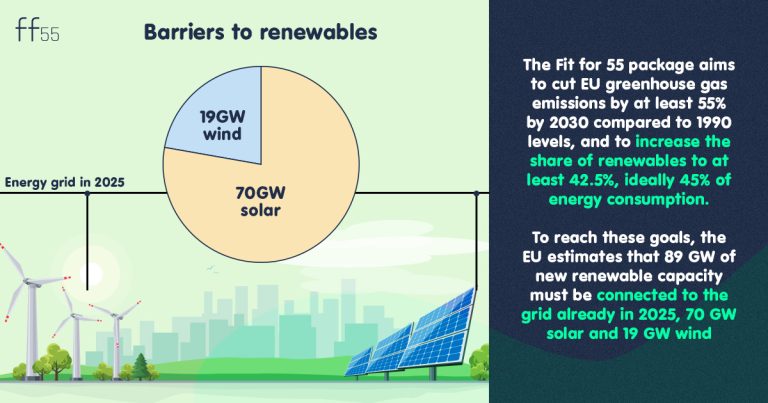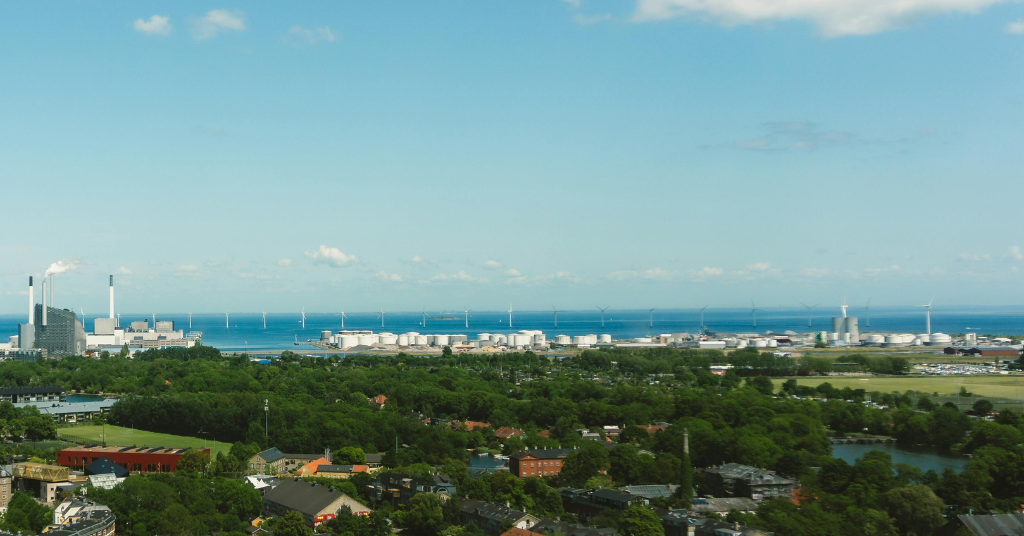Europe’s climate goals today require more than just new solar farms and wind parks, they demand a new kind of permitting. The Fit for 55 (FF55) package aims to cut EU greenhouse gas emissions by at least 55% by 2030 compared to 1990 levels, and to increase the share of renewables to at least 42.5%, ideally 45% of energy consumption. To reach these goals, the EU estimates that 89 GW of new renewable capacity must be connected to the grid already in 2025, 70 GW solar and 19 GW wind. The issue is that projects often sit idle for years in administrative bottlenecks. Reuters

The updated Renewable Energy Directive (RED III) therefore sets strict deadlines: no more than 2 years for permitting new renewable projects and 1 year for repowering (excluding environmental assessments and court procedures). WindEurope
Member states must also establish renewables “go-to areas” by 2026, where projects enjoy simplified and faster procedures.
Still, recent analyses show that member states have so far implemented less than half of the required measures in practice. European Commission
While EU rules provide the framework, success ultimately depends on how each country tackles its own bureaucracy. Let’s look at three promising best practices.
Portugal: digital, unified permitting
Portugal created a mission-driven structure called EMER2030 and built a digital one-stop-shop system to put renewable permitting into a “green fast lane.” EMER centralizes all energy, environmental, and municipal permitting under a unified process, covering renewable generation and storage alike. LNEG
Under the REPowerEU initiative, the country is developing an online platform through which developers can submit all applications digitally and track their real-time status. Dedicated modules handle self-consumption solar systems, energy communities, and household-level storage.
In practice, this means:
- far less paperwork and fewer in-person appointments
- transparent workflows, developers see exactly where their application is stuck
- better coordination between authorities
The FF55 and REPowerEU frameworks have been key accelerators: accessing EU funds requires digital, deadline-driven permitting, prompting Portugal to rapidly transform its system. European Council Eurogas
Slovenia: One-stop solar permitting for households
Slovenia tackles one of renewable development’s biggest hurdles, land-use disputes, by designating priority areas for solar and wind power. These areas must be identified in advance within spatial planning documents, giving developers a clearer path and reducing delays caused by local opposition. Balkan green energy
For household solar systems, Slovenia is moving firmly toward one-stop-shop processes: from rooftop installation approvals to grid connection, citizens can increasingly manage everything through a single interface. Renovation and energy-efficiency programs follow the same logic, integrating technical advice, financing, and permitting in one place. European Commission GOV SE
The potential is significant: estimates show that roughly 60% of Slovenian single-family homes could become nearly zero-energy buildings and combined with rooftop solar, could approach self-sufficiency. Simplified permitting is essential to unlock this “sleeping capacity.” Climate Brussels
Denmark: Online tools + strong municipal partnerships
Denmark pairs digitalization with local-level partnership. The Danish Energy Agency provides detailed online permitting guides that walk developers through each required approval step, while municipalities are responsible for heat-planning and renewable development, including environmental impact assessments. Danish Energy System
Community ownership strengthens local acceptance: Danish law requires that at least 20% of new wind projects be offered for purchase to local residents, helping to mitigate typical “not in my backyard” resistance. IEA
The Danish model highlights a key principle: permitting is not only an administrative process but also a social contract, built on transparency, local cooperation, and digital support tools.
What Can Europe Learn and how does this support FF55?
Together, these examples show what the FF55 implementation can look like in practice:
- Digitalization and one-stop-shop systems
- Portugal’s platform can serve as a blueprint for countries still relying on paper-based processes.
- FF55 technical assistance tools help member states build such systems quickly. European Commission
- Go-to areas and proactive planning
- Slovenia’s approach aligns directly with RED III obligations for designated renewable acceleration zones. OECD
- Local partnerships and energy communities
- Denmark demonstrates the importance of citizen engagement, increasingly emphasized in EU legislation to ensure renewables benefit local communities. Eur-Lex
Speeding up without undermining environmental protection
Faster permitting cannot come at the expense of environmental safeguards. EU rules explicitly require integrating environmental impact assessments and biodiversity protection including Natura 2000 sites, into the streamlined processes. European Commission
Experts warn that excessive deregulation may backfire: it could trigger legal disputes, local resistance, and ultimately longer delays. Official Journal of the European Union
The goal is not fewer assessments, but:
- simpler, more predictable procedures
- earlier involvement of local communities
- reduced administrative burden through digital tools
Conclusion
FF55 does more than set climate targets, it provides a toolbox for turning renewable energy plans into real-world projects. Portugal’s digital one-stop-shop, Slovenia’s streamlined household solar processes, and Denmark’s combination of online systems and community partnerships all show that bureaucracy doesn’t have to be a barrier. With good design, it can become the fast lane for Europe’s green transition.



